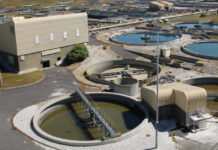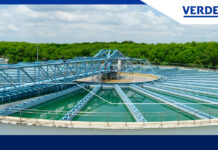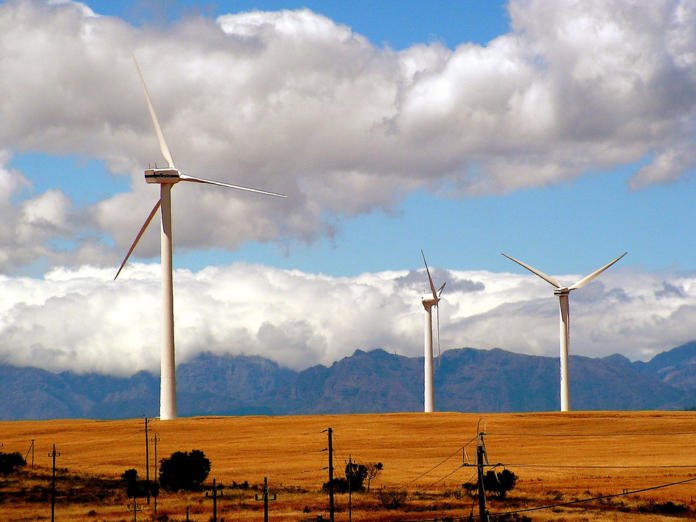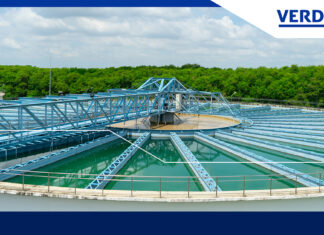Photovoltaic panels and wind turbines are green technologies – but not in terms of waste disposal. Both are difficult to break down in an environmentally sound way, leaving business and technical specialists demanding a solution.
WIND turbines – and their cousins, solar panels – maybe green energy creators but both wind turbines and photovoltaic modules are tough to break down, and nor can they readily be recycled.
Disposal options are too expensive and require far more resources than can be gained by either reuse or sustainable scrapping – at least with current technology.
That leaves the question of what is then to be done with the tens of thousands of wind turbines and solar panels that have served their full lifecycle and must be replaced, and which will only grow in number as the world moves away from fossil fuels.
The wind and solar sectors are said to be working on a solution but the matter is fraught with also technical and environmental challenges and at first glance, current options don’t look great. According to a report from the International Renewable Energy Agency (IRENA), the world will have 78 million tons of spent PV panels on its hands in 2050.
A similar proportion is forecast for old wind turbines.
However, solar modules are apparently an even larger problem. Contemporary PV units contain multiple chemicals and elements like lead and cadmium that are extremely harmful for both the environment and human health. At the same time, such materials quickly trickle down into ground water when old solar panels are tossed into landfills, which is currently the case.
While the EU has strict rules for how solar units may be scrapped it is not so everywhere else, nor in the US, where only 10 percent of all solar modules are discarded in an environmentally sound manner, according to an interview with company Recycle PV Solar in tech media Wired, from August last year.
Meanwhile, it’s both costly and difficult to break down old, decommissioned PV panels to remove toxic chemicals. A recent study from Arizona State University shows that processing an old solar module in an environmentally defensible way costs USD 12-25 against a single dollar needed to just bury the stuff.
Moreover, materials like silver and silicon taken from spent solar cells have a mere market value of around USD 3, or far less than the costs of recovery.
That’s why the modules often end up in toxic pits, both in the west, according to a report from the UN Environmental Programme, as well as in developing countries with a deficit of environmental legislation.
Wind turbines face a similar challenge, despite the fact that around 85 percent of the technology can be recycled after end of lifecycle. The problem applies first and foremost to the enormous blades that harness wind energy. Blades are almost impossible to crush, burn or in any other way disassemble, which is also why most of them are just put into the ground.
Even that’s a cumbersome process. Today’s wind turbine blades are not only massive – often longer than the wings of a Boeing 747 and weighing up to 36 tons apiece – but they’re also made of an especially hardened type of fiberglass built to withstand hurricanes as well as decades of salt and sea air.
Turbine blades can only be broken up with diamond-tipped industrial saws in an expensive process that splits the blade into three sections, after which they are hauled via semi-truck and, in the US, transported to landfills like sites in Wyoming or similar places in South Dakota and Iowa.
In Denmark, used blades are put into a similar ditch on the island of Lolland – and there they stay.
The super-strong fiberglass is practically impervious to natural decomposition. Although unlike PV panels, there isn’t the same issue of chemical spillage into groundwater. Nonetheless, there’s broad agreement that the mounting turbine graveyards aren’t a tenable long-term solution.
The problem will only become compounded over time. According to analyst firm Bloomberg New Energy Finance, tens of thousands of wind turbines will need to be replaced in the coming years as the oldest models on the market will soon be worn out. In the US alone, this means 8 000 blades will decommissioned and then buried annually ahead of 2024. The figure for the EU is 3 200.
At the same time, more and more turbines are being built. If the current trend continues, the US will be stuck with 720 000 tons worth of blades, that will have to buried if another avenue for disposal doesn’t present itself.
There are, however, (Ed: not so green) alternatives: For instance, blades can be broken down in special ceramic vacuum furnaces with temperatures of up to 700⁰C – an expensive option and one that pollutes. Startups and several industrial heavyweights are working to find a better method.
Veolia North America and GE Renewable Energy, have produced a clever method to crush the giant blades into piles of small, rock-like clumps in a special compressor. This material can then be used in concrete and can even, the company says, reduce CO2 emissions in cement production by 27 percent on account of small bits being a cleaner raw material.
Global Fiberglass Solutions, a startup, is working on the same technology, and the company says it expects to soon process up to 7 000 blades per year for each cement plant fitted with its machines.
Commercial innovation might also be to rectify the darker side of solar panels. Recycle PV Solar, founded in 2018, says it will be able to recycle up to 90 percent of an old panel in an economically viable way. These techniques are simply not yet commonly known, the company underscores on its website.
The National Renewable Energy Laboratory’s (NREL) research team reaches the same conclusion and highlights a series of innovations that in theory could be capable of recycling or defensibly breaking down 95-100 percent of the materials from a scrapped solar panel.
The only thing that’s missing is a bag of investment capital for startups with vision and fortitude. Meanwhile, the clock is ticking.
English Edit: Daniel Frank Christensen
The original of this edited version was written by Thomas Høy Davidsen and appeared in Energy Watch, 04.01.21.
For the original article visit: www. https://energywatch.eu/EnergyNews/Renewables/article12664321.ece















